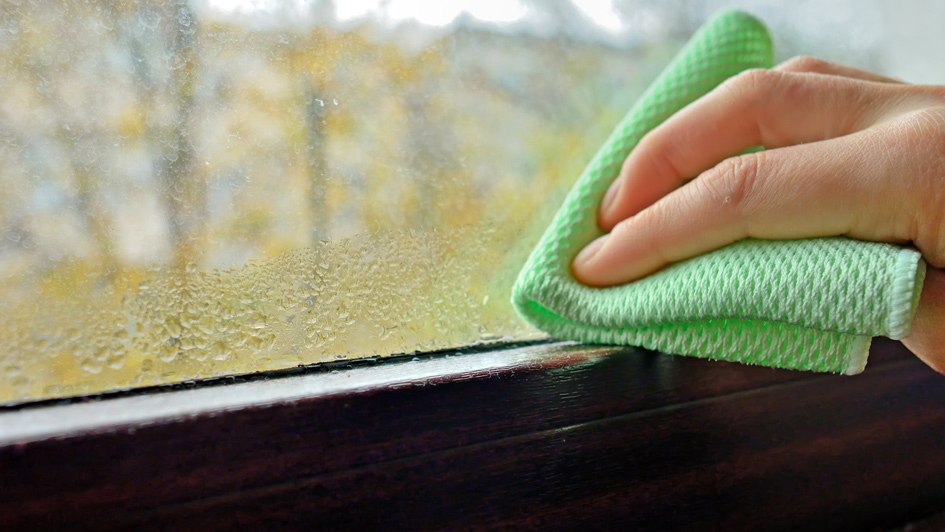
The windows throughout your home are a gateway to the outdoors, a way to draw light in when you enjoy the view of your garden, yard or landscape. The last thing you would want to see is a sweaty window plastered in a coating of condensation.
Not only are windows plastered with condensation unattractive, they also can be a sign of a larger air-quality problem throughout your home. Luckily, there’s multiple things you can try to address the problem.
What Causes Condensation along Windows
Condensation on the interior of windows is created by the damp warm air in your home reaching the colder surface of the windows. It’s particularly prevalent around the winter when it’s much cooler outside than it is in your home.
Inside Moisture vs. In Between Panes
When discussing condensation, it’s important to recognize the distinction between moisture on the inside of your windows in comparison to moisture in between the windowpanes. One is an indoor air quality issue and the other is a window issue.
- Moisture within a window is caused from the warm humid air inside your home condensing along the glass.
- Any moisture you find between windowpanes is produced when the window seal stops working and moisture seeps between the two panes of glass, and by then the window needs to be repaired or replaced.
- Condensation on the inside of the windows isn’t a window problem and can instead be resolved by fine-tuning the humidity inside your home. Numerous things cause humidity throughout a home, like showers, cooking, bathing or even breathing.
Why Indoor Sweating on Windows Could Mean a Problem
Even though you might presume condensation in your windows is a cosmetic problem, it could also be indicating your home has higher humidity. If this is the case, water might also be collecting on window frames, cold walls or other surfaces. Even a small film of water can cause wood surfaces to mildew or rot over time, increasing the growth of mildew or mold.
How to Lower Humidity in Your Home
Fortunately there are various options for removing moisture from the air in your home.
If you have a humidifier running in your home – whether it be a small unit or a whole-house humidifier – lower it further so the humidity inside your home goes down.
If you don’t have a humidifier active and your home’s humidity level is high, think about getting a dehumidifier. While humidifiers put moisture into your home so the air doesn’t become too dry, a dehumidifier extracts excess moisture out of the air.
Compact, portable dehumidifiers can remove the water from one room. However, these units require emptying out water trays and generally service a somewhat limited area. A whole-house dehumidifier will extract moisture throughout your entire home.
Whole-house dehumidifier systems are regulated by a humidistat, which enables you to set a humidity level the same like you would choose a temperature with your thermostat. The unit will start automatically when the humidity level overtakes the set level. These systems work with your home’s HVAC system, so you will receive the best results if you contact skilled professionals for whole-house dehumidifier installation Ellsworth.
Alternative Ways to Lower Condensation on Windows
- Exhaust fans. Adding exhaust fans near humidity hotspots such as the bathroom, laundry room or above the oven can help by drawing the warm, humid air from these areas out of your home before it can raise the humidity level inside your home.
- Ceiling fans. Running ceiling fans can also keep air moving throughout the home so humid air doesn’t get caught up in one spot.
- Opening your window treatments. Opening the blinds or drapes can reduce condensation by stopping the warm air from being stuck against the windowpane.
By reducing humidity across your home and moving air throughout your home, you can take advantage of clear, moisture-free windows even during the winter.

